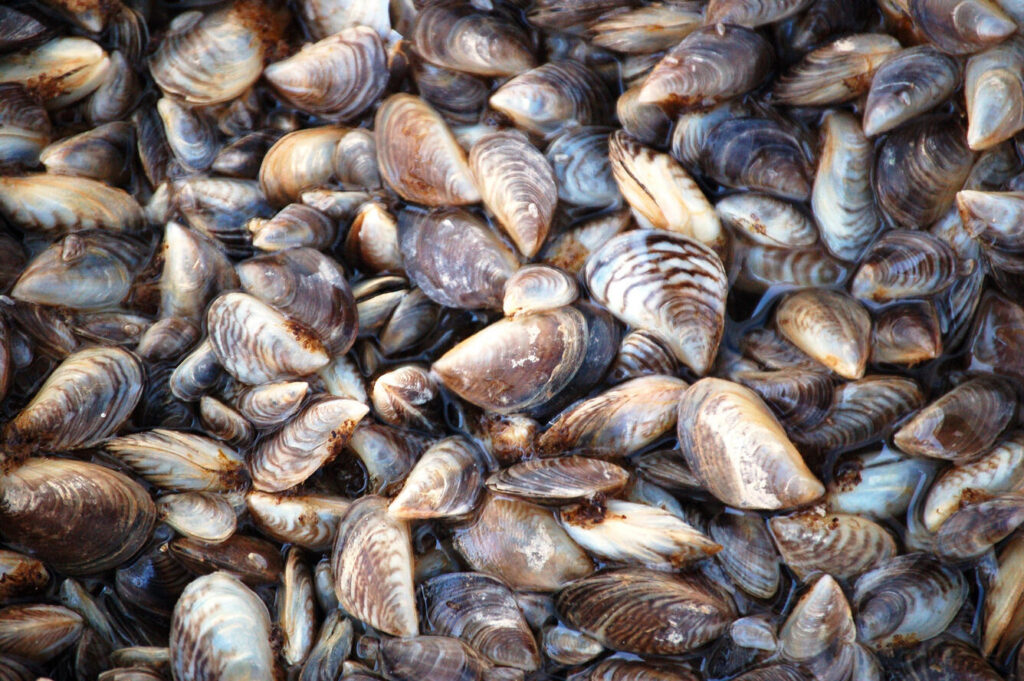Quagga mussels from Lake Mead in Nevada. (Dave Britton, U.S. Fish and Wildlife Service)
State officials and contractors will begin using a copper-based chemical in the Snake River near Twin Falls on Tuesday in an effort to kill off invasive quagga mussels that were detected again last month.
For 10 days Idaho State Department of Agriculture officials and contractors will use the chemical called Natrix downriver of Hansen Bridge to Centennial Waterfront Park, the Idaho State Department of Agriculture announced in a press release Monday.
Quagga mussels are a nonnative invasive species that was first detected in water samples in the Snake River in Idaho in September 2023. State officials used the Natrix chemical last year, and said the chemical was effective at killing mussels.
Officials announced on Sept. 24 that they detected quagga mussels again, the Idaho Capital Sun previously reported.
Treatment approved by EPA, but will kill fish
State officials said quagga mussels reproduce rapidly and are capable of clogging pipes, which poses a risk for drinking water, agriculture, irrigation, hydroelectric energy generation, recreation and tourism.
“This treatment plan reflects Idaho’s commitment to using every available tool to combat this threat,” Idaho State Department of Agriculture Director Chanel Tewalt said in a written statement. “By combining targeted treatments with ongoing monitoring, we are maximizing our efforts with the ultimate goal of eradication.”
State officials plan to administer Natrix again in November in an effort to kill quagga mussels in still water and deep pools.
The Idaho State Department of Agriculture said Natrix is approved by the Environmental Protection Agency for such treatment programs and Natrix will be applied at one part per million, which is below the safe drinking water standard for humans.
However, the chemical used in the treatment program also killed thousands of fish in the Snake River, including at least 48 white sturgeon, some of which were up to 35 years old and eight feet long, the Sun previously reported. So many dead fish floated to the surface that Idaho Department of Fish and Game employees took to the Snake River with nets and removed six or seven tons of dead fish.
Officials from the Idaho Department of Environmental Quality and Idaho State Department of Agriculture will monitor the river for copper dissipation and treatment effectiveness, according to Monday’s news release.
Public access to the Snake River is closed from Hansen Bridge to Yingst Grade. Idaho State Department of Agriculture officials also urge the public to avoid the Snake River from Hansen Bridge, to Kanaka Rapid, which is 18 miles downriver where copper levels are expected to dissipate to normal levels for the river.
This article was first published by the Idaho Capital Sun, which, like Oregon Capital Chronicle, is part of States Newsroom, a nonprofit news network supported by grants and a coalition of donors as a 501c(3) public charity. Idaho Capital Sun maintains editorial independence. Contact Editor Christina Lords for questions: info@idahocapitalsun.com. Follow Idaho Capital Sun on Facebook and X.

